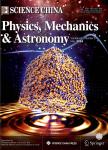Advancing space-based gravitational wave astronomy: Rapid parameter estimation via normalizing flows
作者机构:Center for Gravitational Wave ExperimentNational Microgravity LaboratoryInstitute of MechanicsChinese Academy of SciencesBeijing 100190China Key Laboratory of Gravitational Wave Precision Measurement of Zhejiang ProvinceHangzhou Institute for Advanced StudyUniversity of Chinese Academy of SciencesHangzhou 310024China Shanghai Institute of Optics and Fine MechanicsChinese Academy of SciencesShanghai 201800China International Centre for Theoretical Physics Asia-PacificUniversity of Chinese Academy of SciencesBeijing 100049China Taiji Laboratory for Gravitational Wave Universe(Beijing/Hangzhou)University of Chinese Academy of SciencesBeijing 100049China Lanzhou Center of Theoretical PhysicsLanzhou UniversityLanzhou 730000China Hangzhou Institute for Advanced StudyUniversity of Chinese Academy of SciencesHangzhou 310024China Institute of Theoretical PhysicsChinese Academy of SciencesBeijing 100190China
出 版 物:《Science China(Physics,Mechanics & Astronomy)》 (中国科学:物理学、力学、天文学(英文版))
年 卷 期:2024年第67卷第3期
页 面:20-33页
核心收录:
学科分类:07[理学] 070401[理学-天体物理] 0704[理学-天文学] 0702[理学-物理学]
基 金:supported by the National Key Research and Development Program of China (Grant Nos. 2021YFC2203004, and 2021YFC2201903) supported by the National Natural Science Foundation of China (Grant Nos. 12147103, and 12247187) the Fundamental Research Funds for the Central Universities。
主 题:Taiji program gravitational wave detection parameter estimation machine learning
摘 要:Gravitational wave(GW) astronomy is witnessing a transformative shift from terrestrial to space-based detection, with missions like Taiji at the forefront. While the transition brings unprecedented opportunities for exploring massive black hole binaries(MBHBs), it also imposes complex challenges in data analysis, particularly in parameter estimation amidst confusion noise.Addressing this gap, we utilize scalable normalizing flow models to achieve rapid and accurate inference within the Taiji environment. Innovatively, our approach simplifies the data s complexity, employs a transformation mapping to overcome the year-period time-dependent response function, and unveils additional multimodality in the arrival time parameter. Our method estimates MBHBs several orders of magnitude faster than conventional techniques, maintaining high accuracy even in complex backgrounds. These findings significantly enhance the efficiency of GW data analysis, paving the way for rapid detection and alerting systems and enriching our ability to explore the universe through space-based GW observation.



